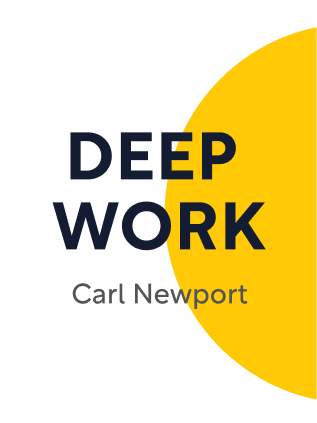

This article is an excerpt from the Shortform book guide to "Deep Work" by Cal Newport. Shortform has the world's best summaries and analyses of books you should be reading.
Like this article? Sign up for a free trial here .
What are the four types of deep work schedules? How can you fit deep work into your life?
The four types of deep work schedule are: the monastic schedule, bimodal schedule, rhythmic schedule, and the journalistic schedule. Each type has its pros and cons and not all types are feasible for every lifestyle.
Keep reading to learn about the different deep work schedules and which one is best for you.
The 4 Deep Work Schedules
An effective way to build a habit of deep work is to set a deep work schedule – setting aside time in advance to focus on deep work.
The book Deep Work offers four types of deep work schedules, with different time requirements and efficacy. To be successful at doing deep work in the long term, you have to find the deep work schedule that best fits your lifestyle and work needs.
Monastic Schedule
- Structure: Remove as many shallow work tasks from your life as possible. Outsource any necessary shallow work tasks to assistants. Spend nearly all your time on deep work. It’s called “monastic” because, like a monk, you spend your time somewhat isolated and in deep focus on your work.
- Examples: Some authors go off the grid and aren’t contactable by email or through social media. All correspondence comes in by postal mail or through their editor.
- Pros: You get extended periods of deep work – it becomes your default working style, not something you have to plan for.
- Cons: This is too luxurious for most people to be able to do given the requirements of their career.
Bimodal/Periodic Schedule
- Structure: Carve out regular periods each week, month, or entire parts of the year to focus on deep work. The book stresses that the period should be at least 1 full day to reach the maximum intensity of deep work (a few hours each morning is insufficient)
- Examples: Professors often take semester-long sabbaticals to focus on deep research. Bill Gates takes think weeks twice a year. You might carve out a 3-day block of the week where you aren’t contactable, while preserving the other 2 days for shallower work.
- Pros: This is more realistic than the monastic schedule. Setting aside at least 1 full day of deep work produces the maximum concentration intensity.
- Cons: Despite being more realistic, it’s still impractical for many workers, who are logistically required to perform certain tasks daily.
Rhythmic Schedule
- Structure: Set aside a regular block of time each day to focus on deep work.
- Examples: Set aside the morning (eg 8AM to 11AM) for deep work, before jumping into shallow work.
- Pros: The regularity is conducive to forming a habit. It’s more realistic for most careers and lifestyle.
- Cons: By being restricted to less than a full day, it doesn’t give the full day of deep work that the Monastic and Periodic schedules provide.
Ad Hoc/Journalistic Schedule
- Structure: Find time to do deep work when you get it.
- Examples: When visiting your in-laws, carve out a few hours to do work, before meeting back up with your family.
- Pros: This is the most flexible. You can conduct deep work at any point when it’s possible.
- Cons: Because it’s irregular, it’s the least successful in setting up a habit. It requires the ability to switch on deep work instantaneously. Because it’s more variable, you’re more likely to run into distractions and thus more likely to consume willpower.
As a side note, Anders Ericsson notes that a novice can do only about an hour a day of intense concentration. Experts who have extensive practice can expand to up to 4 hours, but rarely are able to exceed this.

———End of Preview———
Like what you just read? Read the rest of the world's best book summary and analysis of Cal Newport's "Deep Work" at Shortform .
Here's what you'll find in our full Deep Work summary :
- How deep work is critical for performance and productivity
- Why focus is like a mental muscle
- Why willpower isn't as good as a ritual






